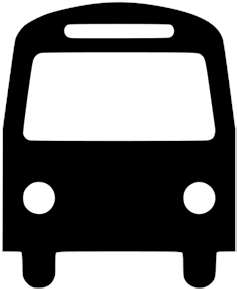Engineer: Ashland Avenue transit project won’t work
By Rosalind Rossi Chicago Sun-Times Transportation Reporter January 18, 2014
A former city traffic expert says a plan to run a dedicated bus lane down the center of Ashland Avenue for 16 miles is “ill-conceived” and nothing like eight other bus rapid transit systems touted as models of success.
Tom Kaeser is the first traffic guru to publicly break ranks with the city and swim against the tide of official and not-for-profit advocates who have been pushing the potential benefits of a $160 million Ashland Bus Rapid Transit.
Kaeser, 64, worked for the Chicago Department of Transportation for 30 years before retiring in 2003 as assistant chief engineer in the department of traffic engineering. Then, he said, he spent six years as a consultant, including to CDOT.
But now, Kaeser said, he is completely retired, and “nobody can say, ‘Cut off his contract.’ I am not renewing my professional licenses. I am 100 percent retired. My life’s work was trying to make things work on the city’s street system, and here’s something I think is not going to help at all. It’s just going to be counterproductive.”
Kaeser aired his deep concerns about the Ashland BRT plan in a detailed 10-page letter to the Chicago Transit Authority submitted during an official comment period that ended Dec. 20.
But before he did that, Kaeser told the Chicago Sun-Times, he waded through some 2,000 pages of online and paper documents, including appendices to appendices in the mountainous, legally required environmental assessment for the Ashland BRT.
He also scoured the streets of the world using Google maps and official websites to examine eight touted bus rapid transit case studies — in Brazil, Cleveland, Eugene, Ore., Los Angeles and New York City.
What he discovered is that none of those systems is similar to what Chicago officials announced for Ashland Avenue, he said. Under the CTA plan, cars, trucks and the regular No. 9 Ashland Avenue bus would be relegated to one lane of traffic in each direction for almost all of 16 miles, from Irving Park to 95th Street, with only a handful of left turns directly onto expressway ramps allowed.
“I couldn’t find anything that was very close to Ashland at all,” Kaeser said. “In city after city it seemed to be that way.”
Most other systems have at least twice as much lane capacity for regular traffic on their BRT street, or within one block of it, Kaeser said.
The closest street with at least four lanes running parallel to Ashland is a half-mile to 1 mile away, leading some residents to fear a “carmaggedon” of vehicles pouring through adjacent side streets to make three right turns because they cannot turn left off Ashland. Retailers worry that customers frustrated by traffic will go elsewhere and delivery trucks will be delayed.
Kaeser tends to agree. He called the CTA’s plan so “ill-conceived” that it “could be a dagger in the heart of Chicago.’’
“Everybody says in these other cities they never had any traffic problems, even though naysayers said there would be,” Kaeser said. “Well, they are not like Chicago.”
World-renowned Chicago grid
CTA officials say their proposal is a work in progress, and more left turns may be added. Another option is to let the No. 9 bus travel in the center-running transit lane and stop at center boarding stations, a CTA spokeswoman said.
However, those adjustments were not reflected in calculations that predicted BRT buses would travel at 15.9 mph during the peak of each rush hour. That’s 83 percent faster than the 8.7 mph of the current No. 9 Ashland bus — the city’s busiest — during that same time.
Shrinking auto lanes to accommodate a BRT would only knock 2.5 mph off current car speeds, bringing them to 12.8 mph during rush-hour peak, the environmental assessment predicted.
An Ashland BRT, with its traffic-signal priority and stops every half-mile, could serve 1 in 4 households within walking distance that do not have a car, advocates say.
CTA officials are putting their faith in Chicago’s street grid system to absorb a projected 35 percent of traffic diverted from Ashland to north-south arterial streets, from Kedzie to Halsted.
“Chicago’s grid system is renowned throughout the world for its ability to handle diversion,’’ CTA spokesman Brian Steele said.
Kaeser doesn’t buy it.
Chicago’s grid may handle diversion well downtown, where another BRT is proposed, Kaeser said. There, drivers can reroute to a major arterial just a block or two away. But the closest parallel four-lane street for the 16 miles of Ashland under discussion is Western, a mile a way. Damen, a half-mile away, has two lanes in each direction for only about 1.5 miles parallel to the project, he said.
He questioned the traffic model used to make projections, saying some counts of current traffic volumes are unrealistic, so how could the model reliably make predictions?
Kaeser said some data indicates as many as 1,000 vehicles per hour could divert from Ashland.
‘‘They use their modeling process and say the traffic will all spread out; no one will see the difference. I challenge that,’’ Kaeser said. “Their analysis left something to be desired.’’
Kaeser said his review of Google maps and official website depictions of other systems indicate:
† In Cleveland, streets on either side of the BRT street generally offer at least two lanes of traffic in each direction. On those BRT streets with center-running buses, cars can turn left at special stoplights.
†BRTs in Sao Paulo, Brazil, and Eugene, Ore., have at least two lanes in each direction for nonbus traffic on the same street as their BRTs. Eugene allows left turns.
†BRT pioneer Curitiba, Brazil, has one-way streets on either side of its BRT street, of three to four lanes each.
†Los Angeles vehicles didn’t lose any traffic lanes to the Metro Orange Line BRT, which runs on a former streetcar right of way.
†None of the five BRTs in New York, including three listed as BRT “case studies,” use a center-running BRT, as Chicago plans. Fordham Road in the Bronx, for example, uses curbside BRT lanes with at least two other lanes in each direction, plus left-turn lanes.
CTA officials have compared the Ashland BRT to a relatively new one on New York’s Webster Street, which also has only one lane in each direction for non-bus traffic. But Webster has half the daily traffic volume of Ashland, operates on the right side of the road, and allows 51 left turns over 5.4 miles.
In addition, regular New York buses run in the same bus lane as the BRT, something CTA officials did not initially propose but now are considering.
Peter Skosey, of the Metropolitan Planning Council, cautioned that the latest Ashland plans are a mere “broad brush” still subject to fine-tuning. The key point is to lure more people out of cars and into buses, he said.
“If we can double the number of people riding on the Ashland bus, that’s a lot more people moving up and down Ashland,” Skosey said.
“This isn’t just about the cars that are going to be inconvenienced, but it’s about all the people who are going to be convenienced by riding the bus. The focus is too much on the cars and not enough on the bus riders.’’
However, 10 times as many people currently travel Ashland in a car or truck as in a bus, Kaeser said.
“You are giving half of the through traffic lanes and left turn lanes over to the buses for a very relatively lower proportion of users — significantly lower in my opinion,” Kaeser said.
“Are we doing the right thing here? Is this the best thing for the city? I question that. I’m not convinced. That’s why I’m saying, ‘No.’ ”
Email: rrossi@suntimes.com
The next monthly meeting of Citizens Taking Action for advancement of public transit will be on Monday, April 13th, from 7-9:00 PM, at Powell's Bookstore, Halsted and Roosevelt (800 W, 1200 S)


